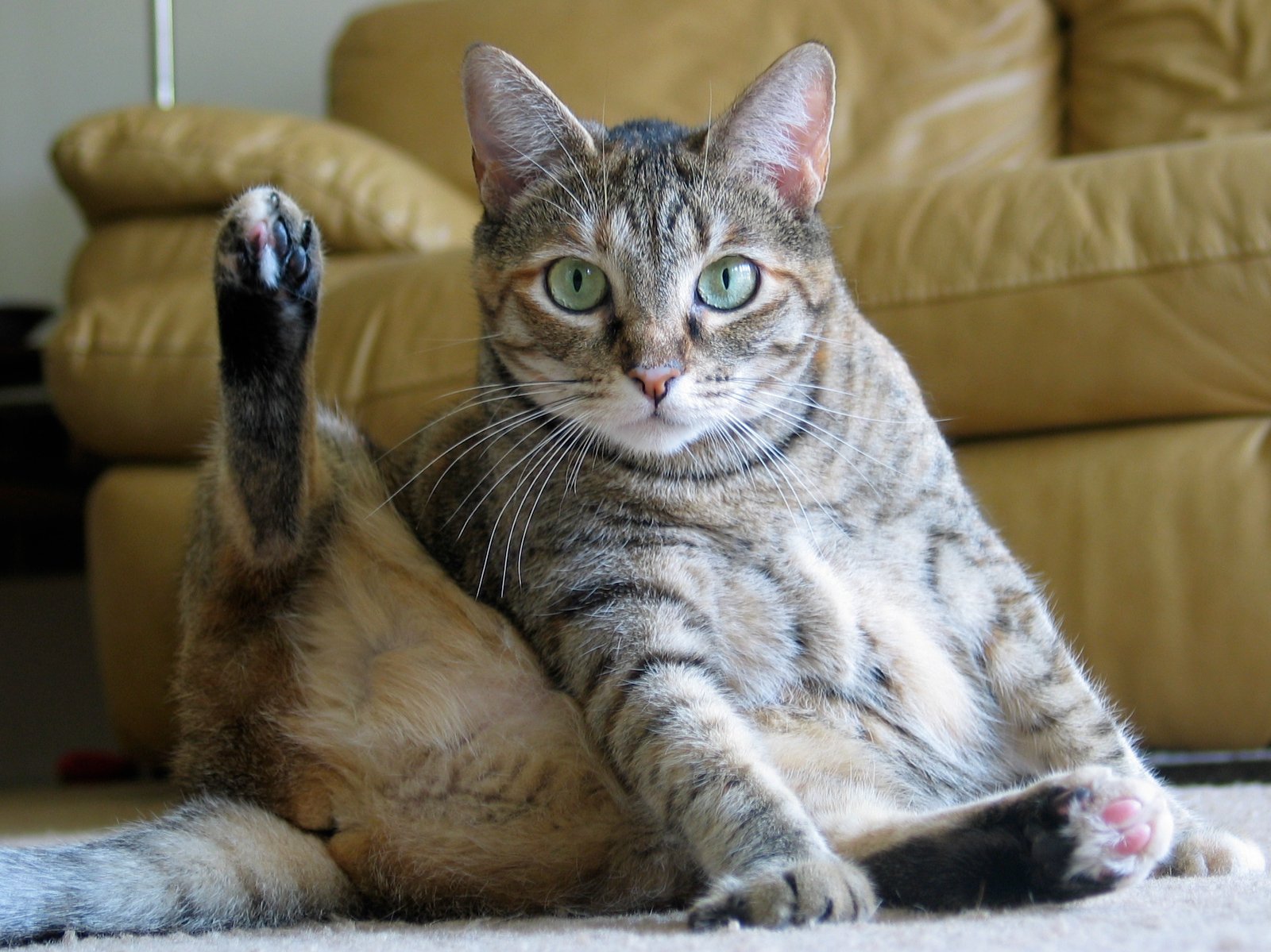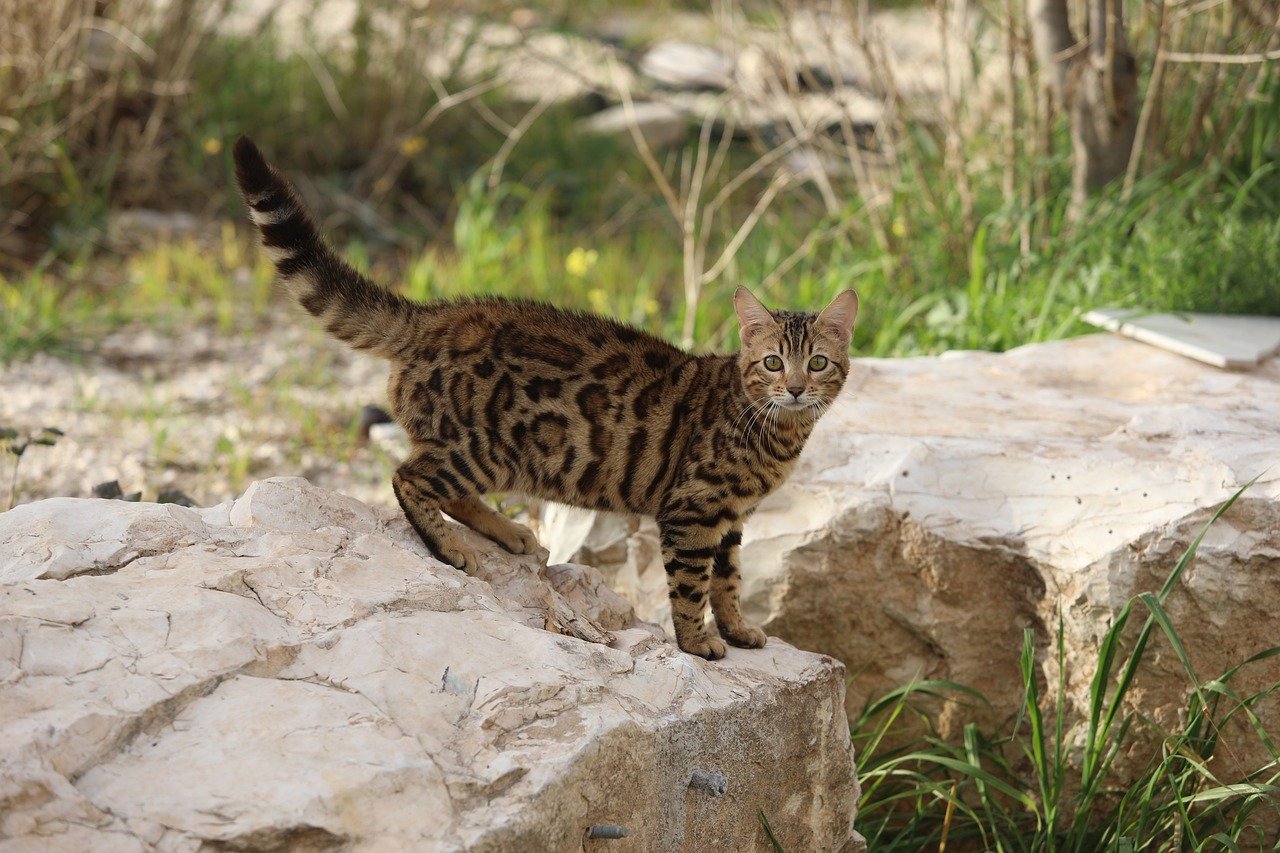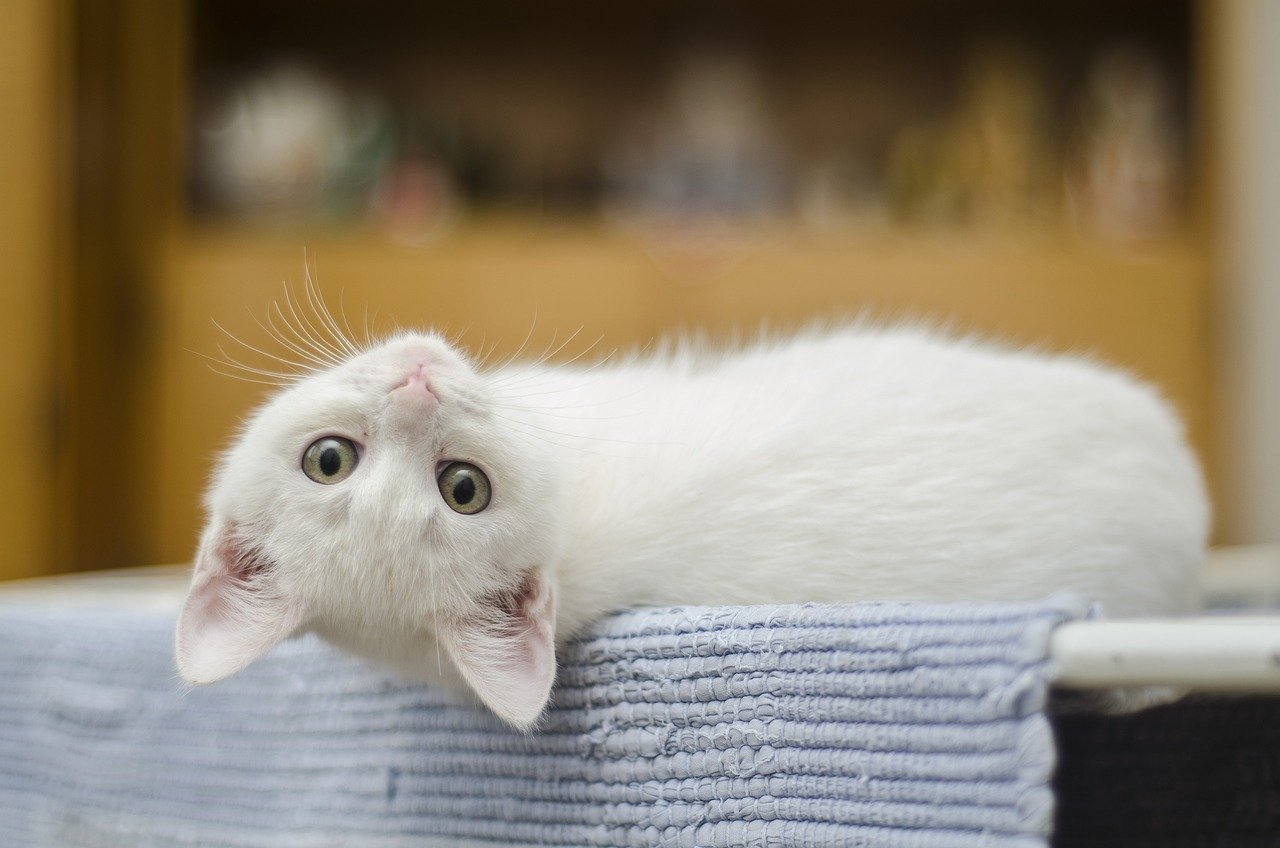A sudden move, a new pet in the house, or a loud renovation can turn a cat’s world upside down. If you’re a devoted cat lover, you’ve likely seen your feline friend react in ways that are both heartwarming and mysterious. But what if those odd little behaviors after a big change aren’t just quirks, but signs that your cat is finding comfort and adapting? Let’s dive into the subtle, soothing things cats do that show they’re coping, healing, and—most importantly—reassuring themselves and you that things will be okay.
Seeking Out Familiar Scents

After a major upheaval, you might notice your cat sniffing around more than usual. Cats rely heavily on their sense of smell to feel safe. They often gravitate toward blankets, beds, or clothing that smell like their favorite humans or their old territory. This behavior helps them ground themselves in the midst of chaos. If your cat buries their nose in your laundry pile, it’s their way of saying, “This is home.” These familiar scents are like a soft lullaby, soothing their nerves and reminding them they’re not alone. The simple act of curling up on an old sweatshirt can provide immense comfort. For many cats, just one whiff of “home” is enough to melt away anxiety.
Slowly Exploring New Spaces

One of the most reassuring signs after a move or big change is when a cat starts to explore. They’ll often begin with a cautious nose poke out of their hiding spot. Inch by inch, they map out their new environment, sniffing and observing before making their next move. It’s like watching a timid adventurer slowly gain confidence. Each tentative step is a victory, showing they’re building trust in their new surroundings. Sometimes, they’ll return to their safe spot for reassurance, only to venture out again a little braver each time. This gradual exploration is their way of telling you: “I’m ready to accept this new chapter.”
Reestablishing Their Favorite Spots

After a big change, cats instinctively seek out or recreate their favorite spots. Maybe it’s a sunny window ledge, a cozy basket, or the top of the fridge. They may knead the cushion or circle the spot before settling in, marking it as their own. This ritual is more than a habit—it’s a statement of comfort and ownership. Even if the scenery has changed, this familiar ritual sends a powerful message: “I still have a place here.” Observing your cat reclaim their throne is a sign that, deep down, they’re starting to feel at home again.
Increased Affection Toward Their Humans

Some cats become more affectionate after a big change, seeking out extra cuddles, purring loudly, or following you from room to room. This is their way of finding comfort in what’s familiar and beloved—you. The warmth of your lap or the sound of your voice helps them feel safe. They may rub against your legs or curl up beside you, almost as if to say, “We’re in this together.” For anxious cats, this closeness is a lifeline, and it can be incredibly touching to see your feline companion reach out for reassurance.
Grooming More Than Usual

Grooming is a cat’s natural stress-reliever. After a big change, you might notice your cat licking their fur more often, sometimes to the point of obsession. This self-soothing behavior is like a gentle meditation, calming their nerves and restoring a sense of normalcy. It’s not just about cleanliness—grooming triggers the release of endorphins, making your cat feel more relaxed. While excessive grooming can be a sign of stress, moderate increases are usually just your cat’s way of coping. Watching their rhythmic, careful cleaning can even be calming for you as the owner.
Vocalizing in New Ways

Have you ever noticed your cat meowing, chirping, or even trilling more after a big upheaval? These vocalizations are part of how cats process change. Some cats “talk” more to seek reassurance, while others might use their voice to communicate their feelings. It’s their way of saying, “I’m here, are you?” or “I need some comfort.” Sometimes, these new sounds are softer and more frequent, almost like a conversation between your cat and their new environment. Listening closely to these vocal cues can give you insight into their emotional state.
Playing With Favorite Toys

When the world seems uncertain, many cats turn to the familiar joy of play. Don’t be surprised if your cat digs out their favorite mouse toy or starts batting at a string. Play is a powerful form of reassurance, reminding them that even in a new place, fun is still possible. The act of hunting, pouncing, and chasing can quickly distract from anxiety. If your cat starts playing again after a change, it’s a sure sign they’re adjusting and finding moments of happiness amid the upheaval. It’s a little spark of normalcy in a world turned upside down.
Hiding, Then Emerging Gradually

It’s common for cats to hide after a big change—under the bed, in the closet, or behind the couch. While this might seem worrisome, it’s actually a healthy coping mechanism. Hiding gives your cat time to process and regroup. What’s truly reassuring is when your cat starts to emerge, even if just for a few minutes at a time. Each appearance is a small step toward confidence. Over days or weeks, these appearances become longer and more frequent. This gentle return signals that your cat is starting to feel safe again.
Sleeping More Soundly

Stress can disrupt a cat’s sleep, leading to restless nights and constant alertness. But as your cat begins to adjust, you’ll notice them settling in for deeper, more peaceful naps. A cat who can sprawl out and snooze with their belly exposed is one who feels at ease. Sleep is essential for recovery, and watching your cat drift off is a powerful sign that they’re letting go of their worries. Their soft purrs and twitching whiskers during REM sleep are gentle reminders that, slowly but surely, calm is returning to their world.
Using Their Litter Box Reliably

A big change can throw off a cat’s bathroom habits, often resulting in accidents. But when your cat starts using their litter box reliably again, it’s a huge step forward. This means they feel safe enough to let their guard down and resume normal routines. Cats are creatures of habit, and a return to consistent litter box use is their way of saying, “I trust this place.” It’s a victory for both cat and owner, signaling a return to stability.
Rubbing Their Scent on Objects

Cats have scent glands on their cheeks and heads, and after a major change, they’ll often rub against furniture, doors, or even your legs. This behavior is called “bunting,” and it’s how cats mark their territory. By spreading their scent, your cat is making the new space feel more like home. It’s their way of saying, “This is mine. I belong here.” Watching your cat claim their space with a head-butt or cheek rub is a reassuring milestone in their adjustment process.
Resuming Regular Eating Habits

Stress can cause cats to lose their appetite, but a return to regular meals is a promising sign. When your cat starts eating with their usual enthusiasm, it’s a clear indicator that they’re settling in. You might hear the familiar crunch of kibble or see your cat waiting patiently by their food bowl. These routines are comforting for both you and your cat, signaling a return to normal life. Eating well is not just about nourishment—it’s a sign of well-being and contentment.
Following Their Owner Around

If your cat starts shadowing your every move after a big change, it’s not just curiosity—it’s reassurance-seeking. Sticking close to you helps them feel safe and supported. They may wind around your feet, perch on the back of your chair, or simply watch you from a distance. This behavior is their way of saying, “I trust you to keep me safe.” For many cat owners, this new closeness is a touching reminder of the deep bond you share.
Responding to Their Name

After a stressful event, some cats may seem withdrawn and unresponsive. But when your cat starts perking up at the sound of their name, it’s a joyful sign of recovery. They might look up, meow, or even trot over for a pet. This renewed engagement shows that they’re emerging from their shell and reconnecting with their loved ones. It’s a small but meaningful gesture that signals growing confidence and trust.
Engaging in Mutual Grooming With Other Pets

If you have more than one cat, or a cat and a dog, watch for signs of mutual grooming after a big change. When cats lick and clean each other, it’s an act of trust and reassurance. This behavior may increase after a stressful period, serving as a way to strengthen bonds and soothe each other. Mutual grooming is a powerful indicator that your pets are finding comfort in companionship, helping each other navigate the unfamiliar.
Chirping or Chattering at Birds and Windows

Cats love to watch the world outside. If your cat starts chirping, chattering, or tail-twitching at birds through the window, it means they’re feeling curious and engaged again. These behaviors are playful and natural, showing that their confidence is returning. The fascinating sights and sounds outside provide a welcome distraction and a sense of normalcy. When your cat resumes their window-watching rituals, it’s a reassuring sign that life is getting back to normal.
Kneading With Their Paws

Kneading—when a cat rhythmically presses their paws into a soft surface—is a leftover behavior from kittenhood. It’s associated with comfort and security. After a big change, you may notice your cat kneading your lap, a blanket, or even their own bed more often. This behavior helps them self-soothe and feel safe. It’s as if they’re creating a little island of comfort in a sea of uncertainty. For many cat owners, kneading is a sweet, reassuring reminder that their pet is finding peace.
Bringing You “Gifts”

Some cats express their adjustment by bringing you small “gifts”—a favorite toy, a sock, or, for outdoor cats, a less-welcome critter. While it might seem odd, this is your cat’s way of sharing and connecting. It’s a gesture of trust and affection, showing that they’re feeling secure enough to give. Accepting these gifts with gratitude (rather than horror) helps reinforce your bond and reassures your cat that their world is safe once again.
Meowing for Attention at Night

Change can sometimes disrupt a cat’s sleep cycle, leading to increased nighttime activity. If your cat starts meowing for attention after dark, it’s often a sign they’re seeking comfort. While it might be inconvenient, this behavior usually fades as your cat becomes more comfortable. Responding with gentle reassurance—without reinforcing unwanted habits—can help them settle back into a routine. Over time, your cat’s nighttime calls will lessen as their confidence grows.
Purring in Your Presence

Purring is the ultimate sign of feline contentment. After a big change, hearing your cat purr while sitting with you is deeply reassuring. This soothing sound means they feel safe, loved, and at home. Purring can also be self-healing, helping your cat relax and recover from stress. When your cat curls up and purrs beside you, it’s a beautiful reminder that, even after upheaval, the bond you share remains strong.
Showing Curiosity About New Things

As your cat adjusts, you’ll notice them investigating new sights, sounds, and smells with growing curiosity. Maybe they’ll climb into a box, paw at a new plant, or tilt their head at a new noise. This renewed curiosity is a clear sign that your cat is moving past fear and embracing their changed world. They’re no longer just surviving—they’re thriving, eager to discover what comes next. Watching your cat’s curiosity return is one of the most reassuring sights for any cat lover.
Hi, I’m Bola, a passionate writer and creative strategist with a knack for crafting compelling content that educates, inspires, and connects. Over the years, I’ve honed my skills across various writing fields, including content creation, copywriting, online course development, and video scriptwriting.
When I’m not at my desk, you’ll find me exploring new ideas, reading books, or brainstorming creative ways to solve challenges. I believe that words have the power to transform, and I’m here to help you leverage that power for success.
Thanks for stopping by, Keep coming to this website to checkout new articles form me. You’d always love it!






